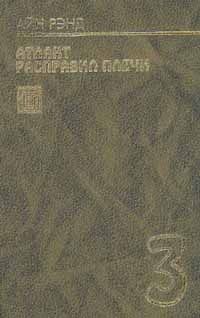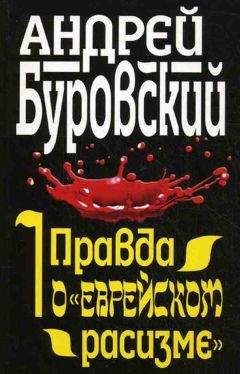Питер Хизер - Восстановление Римской империи. Реформаторы Церкви и претенденты на власть
Robinson, I. S. (1990). The Papacy 1073–1198: Continuity and innovation (Cambridge).
Robinson, I. S. (2004a). The Papal Reform of the Eleventh Century: Lives of Pope Leo IX and Pope Gregory VII (Manchester).
Robinson, I. S. (2004b). ‘Reform and the Church 1073–1122’, in Luscombe and Riley-Smith (2004a), 268–334.
Robinson, I. S. (2004c). ‘Institutions of the Church 1073–1216’, in Luscombe and Riley-Smith (2004a), 368–460.
Robinson, I. S. (2004d). The Papacy 1122–1198’, in Luscombe and Riley-Smith (2004b), 317–383.
Rolfe, J. C. (ed.) (1935–1939). Ammianus Marcellinus (London).
Rosenwein, B. (1989). To be the Neighbor of Saint Peter: The Social Meaning of Cluny’s Property, 909-1049 (Ithaca).
Rothwell, H. (ed.) (1975). English Historical Documents 1189–1327 (London).
Rouche, M. (1979). L’Aquitaine: des Wisigoths aux Arabes, 418–781; naissance d’une région (Paris).
Rushworth, A. (2004). ‘From Arzuges to Rustamids: State formation and regional identity in the Pre-Saharan Zone’, in A. H. Merrills (ed.), Vandals, Romans, and Berbers: New Perspectives on Late Antique North Africa (Aldershot), 77–98.
Sarris, P. (2002). ‘The Justinianic Plague: Origins and Effects’, Continuity and Change 17, 169–182.
Sarris, P. (2011). Empires of Faith: The Fall of Rome to the Rise of Islam, 500–700 (Oxford).
Sartre, M. (1982). ‘Trois études sur l’Arabie romaine et byzantine’, in Revue d’etudes latines (Brussels).
Schäfer, C. (1991). Der weströmische Senat als Träger antiker Kontinuität unter den Ostgotenkönigen (490–540 n. Chr.) (St Katharinen).
Schatz, K. (1990) Papal Primacy from its Origins to the Present (Collegeville, Minn.).
Schenkl, H. et al. (eds) (1965–1974). Themistii Orationes (Leipzig).
Schieffer (2003). Die Streitschriften Hinkmars von Reims und Hinkmars von Laon, 869–871 (Hanover).
Schmidt, T. (1977). Alexander II. (1061–1073) und die römische Reformgruppe seiner Zeit (Stuttgart).
Scholl, R. and Kroll, G. (eds) (1928). Novellae (Berlin).
Scott, L. R. (1976). ‘Aspar and the Burden of Barbarian Heritage’, Byzantine Studies 3, 59–69.
Scott, S. P. (trans.) (1932). The Civil Law, Including the Twelve Tables: The Institutes of Gaius, the Rules of Ulpian, the Opinions of Paulus, the Enactments of Justinian, and the Constitutions of Leo (Cincinnati).
Shanzer, D. and Wood, I. N. (trans.) (2002). Avitus of Vienne: Letters and Selected Prose (Liverpool).
Shea, G. W. (1998). The Iohannis or De bellis libycis of Flavius Cresconius Corippus (Lewiston, Me.).
Sinor, D. (1977). Inner Asia and Its Contacts with Medieval Europe (London).
Sirks, A. J. B. (2007). The Theodosian Code: A Study (Friedrichsdorf).
Smith, C. (1988). Christians and Moors in Spain, vol. 1 (Warminster).
Smith, R. P. (1860). The Third Part of the Ecclesiastical History of John Bishop of Ephesus (Oxford).
Somerville, R. and Brasington, B. C. (1998). Prefaces to Canon Law Books in Latin Christianity: Selected Translations, 500-1245 (New Haven).
Sorabji, R. (1983). Time, Creation and the Continuum: Theories in Antiquity and the Early Middle Ages (London).
Sotinel, C. (2005). ‘Emperors and Popes in the Sixth Century: The Western View’, in Maas, 267–290.
Staniforth, M. (ed.) (1987). Early Christian Writings (Harmondsworth).
Stathakopoulos, D. (2000). ‘The Justinianic Plague Revisited’, Byzantine and Modern Greek Studies 24, 256–276.
Stein, E. (1949). Histoire du Bas-Empire, vol. 1 (Paris).
Stein, E. (1950). Histoire du Bas-Empire, vol. 2 (Paris).
Stein, P. (1999). Roman Law in European History (Cambridge).
Stewart, H. F. et al. (1918). Boethius: Tractates, De Consolatione Philosophiae (Cambridge, Mass.).
Stocking, R. (2000). Bishops, Councils, and Consensus in the Visigothic Kingdom, 589–633 (Ann Arbor).
Story, J. (ed.) (2005a). Charlemagne: Empire and Society (Manchester).
Story, J. (2005b). ‘Charlemagne and the Anglo-Saxons’, in Story (2005a), 195–210.
Teillet, S. (1984). Des Goths à la nation gothique: les origines de l’idée de nation en Occident du Ve au VIIe siècle (Paris).
Thompson, A. and Gordley, J. (1993). The Treatise on Laws: (Decretum DD 1-20) (Washington DC).
Thompson, E. A. (1946). ‘The Isaurians under Theodosius II’, Hermathena, 18–31.
Thompson, E. A. (1969). The Goths in Spain (Oxford).
Thompson, E. A. (1982). Romans and Barbarians: The Decline of the Western Empire (Madison).
Thorpe, L. (1974), Gregory of Tours: The History of the Franks (London).
Tillmann, H. (1980). Pope Innocent III (Amsterdam).
Tuchman, B. (1979). A Distant Mirror: The Calamitous 14th Century (New York).
Turner, C. H. (1903). ‘Chapters in the History of Latin MSS III: The Lyon-Petersburg MS of Councils’, Journal of Theological Studies 4, 426–434.
Tyerman, C. (2006). God’s War: A New History of the Crusades (London).
Ullmann, W. (1960). The Medieval Papacy: St Thomas and Beyond (London).
Ullmann, W. (1970). Growth of Papal Government, 3rd ed. (London).
Vessey, M. (1993), ‘The Origins of the Collectio Sirmondiana’, in The Theodosian Code, ed. I. N. Wood and J. Harries (London), 178–199.
Vives, J. (1963). Concilios visigóticos e hispano-romanos (Barcelona).
Waitz, G. (1911). Einhardi Vita Karoli Magni, 6th ed., MGH Scriptores rerum Germanicarum in usum scholarum (Hanover).
Wallace-Hadrill, J. M. (1982). The Long-haired Kings (Toronto).
Ward Perkins, B. (1984.). From Classical Antiquity to the Middle Ages: Urban Public Building in Northern and Central Italy, AD 300–850 (Oxford).
Ward Perkins, B. (2005). The Fall of Rome and the End of Civilization (Oxford).
Watson, A. et al. (1998). The Digest of Justinian (Philadelphia).
Watt, J. A. (1999). ‘The Papacy’, in D. Abulafia (ed.), The New Cambridge Medieval History, vol. 5 (Cambridge), 107–163.
Werner, K. F. (1979). ‘Kingdom and Principality in Twelfth Century France’, in T. Reuter (ed.), The Medieval Nobility: Studies on the Ruling Classes of France and Germany from the Sixth to the Twelfth Century (Amsterdam), 243–290.
Werner, K. F. (1980). ‘Missus-marchio-comes: entre l’admi nistration centrale et l’administration locale de l’empire carolingien’, in W. Paravicini and K. F. Werner (eds), Histoire comparée de l’administration (IVe – XVIIIe siècle), Beihefte der Francia 9 (Munich), 191–239.
Whitby, L. M. (1985). ‘Justinian’s Bridge over the Sangarius and the Date of Procopius’ De adeficiis’, Journal of Hellenic Studies 105, 129–148.
Whitby, L. M. (1986). ‘Procopius and the Development of Roman Defences in Upper Mesopotamia, in H. Kennedy and P. Freeman (eds), The Defence of the Roman and Byzantine Near East (Oxford), 717–735.
Whitby, L. M. (1988). The Emperor Maurice and his Historian: Theophylact Simocatta on Persian and Balkan Warfare (Oxford).
Whitby, L. M. (2000). ‘The Balkans and Greece, 420–602’, in Cameron et al. (2000), 701–730.
Whitby, L. M., and Whitby, J. M. (1986). The History of Theophylact Simocatta (Oxford).
Whitby, L. M. and Whitby, J. M. (1989). The Chronicon Paschale (Liverpool).
Whitelock, D. (1996). English Historical Documents, c. 500-1042, 2nd ed. (London).
Whittow, M. (1996). The Making of Orthodox Byzantium, 600-1025 (London).
Wickham, C. J. (1981). Early Medieval Italy: Central Power and Local Society, 400-1000 (London).
Wickham, C. J. (1993). ‘La chute de Rome n’aura pas lieu. A propos d’un livre récent’, Le Moyen Age 99, 107–126.
Wickham, C. J. (2005). Framing the Early Middle Ages: Europe and the Mediterranean 400–800 (Oxford).
Wickham, C. J. (2009). The Inheritance of Rome: A History of Europe from 400 to 1000 (London).
Williams, A. (1991). The English and the Norman Conquest (Wood-bridge).
Wiseman, J. (1984). ‘The City in Macedonia Secunda’, in V. Popovic (ed.), Villes et Peuplement dans l’Illyricum protobyzantin (Rome), 289–313.
Wolfram, H. (1988). History of the Goths, trans. T. J. Dunlap (Berkeley).
Wollasch, J. (1999). ‘Monasticism: the First Age of Reform’, in Reuter (1999), 163–185.
Wood, I. N. (1994). The Merovingian Kingdoms (London).
Wood, I. N. (1995). ‘Teutsind, Witlaic and the History of Merovingian Precaria’, in W. Davies and P. Fouracre (eds), Property and Power in the Early Middle Ages (Cambridge), 31–52.
Wood, S. (2006). The Proprietary Church in the Medieval West (Oxford).
Wormald, P. (1999). The Making of English Law: King Alfred to the Twelfth Century. Volume 1, Legislation and Its Limits (Oxford).
Wright, F. A. (1993). Liutprand of Cremona: The Embassy to Constantinople and Other Writings (London).
Wright, R. (1982). Late Latin and Early Romance in Spain and Carolingian France (Liverpool).
Wright, R. (1996). Latin and the Romance Languages in the Early Middle Ages (Philadelphia).
Примечания
1
Как долго просуществовала Римская империя, зависит, конечно, от того, как считать. Я датирую ее установление с момента ее первых приобретений за пределами Италии – завоевания о. Сицилия. Цит. из: Малх 14, перевод Блокли (1983), 410.
2
Для более полного исследования этих решающих преобразований см.: Хизер (2005), c. 3; c. 2–3 с полным указанием на многочисленные и различные исследования.
3
Это краткое изложение истории, которую я попытался рассказать подробнее в «Падении Рима»: Хизер (2005).
4
На тему так называемой славянизации Европы, которая перекроила карту Центральной и Восточной Европы, см.: Хизер (2009), особенно c. 7–8 со ссылками на литературу.
5
Кассиодор, Variae 1.1, перев. Ходжкин (1886), 141–142. Самое лучшее изложение эллинистических концепций о королевской власти и их (едва) облагороженного христианством продолжения в позднеримском периоде – Дворник (1966); Маккормак (1981) о регулярном разыгрывании имперского церемониала.
6
«Гетика» 52.271.
7
Gens purpura: напр., Variae 4.1:9.1:10.1–4. Поколения перечислены в Variae 9.25. Более полная родословная Амалов изложена в «Гетике» 14.79–81.
8
Иордан рассказывает о своем использовании истории Кассиодора в «Гетике» Pref. 2–3. Момильяно (1955), как известно, доказывал, что Иордан лжет, чтобы скрыть свою близость к Кассиодору. Гоффарт (1988) утверждал обратное. Обе точки зрения имеют и других сторонников. Свое мнение я изложил более подробно в: Хизер (1991), c. 2 (1993). Два письма Кассиодора, которые относятся к этому спору, содержатся в Variae 9.24–25.
9
Фракийские готы сыграли большую роль в последовавших событиях. «Готы под властью гуннов»: Прискус fr. 49. «Крым и Азовское море»: Прокопий. «Войны» 8.4.9 и далее. Прокопий. «О постройках» 3.7.13.
10
«Гетика» 48.246–252 у Хизера (1989).
11
Триста фунтов золотом в год, получаемых Валамиром: Прискус fr. 37. Контраст между видимым богатством черняховской культуры IV в. при главенстве готов и золотом периода гуннов потрясающий. Ср., напр.: Хизер (1996), с. 3 с Бирбрауэр (1980) или Бона (1991). Хизер (2009), с. 5 показал более широкое влияние подъема и падения империи гуннов более подробно и со всеми ссылками на существующие знания.
12
Более подробно о вандалах и вестготах см.: Хизер (2009), с. 4. Хлодвиг: Григорий Турский. «История франков» 2.40–42.
13
То, без чего нельзя обойтись (лат.).
14
О политике создания города см.: Дагрон (1974), Хизер и Монкур (2001) о создании сената и его последующем использовании. У Грига и Келли (2012) есть полезная дополнительная информация.



